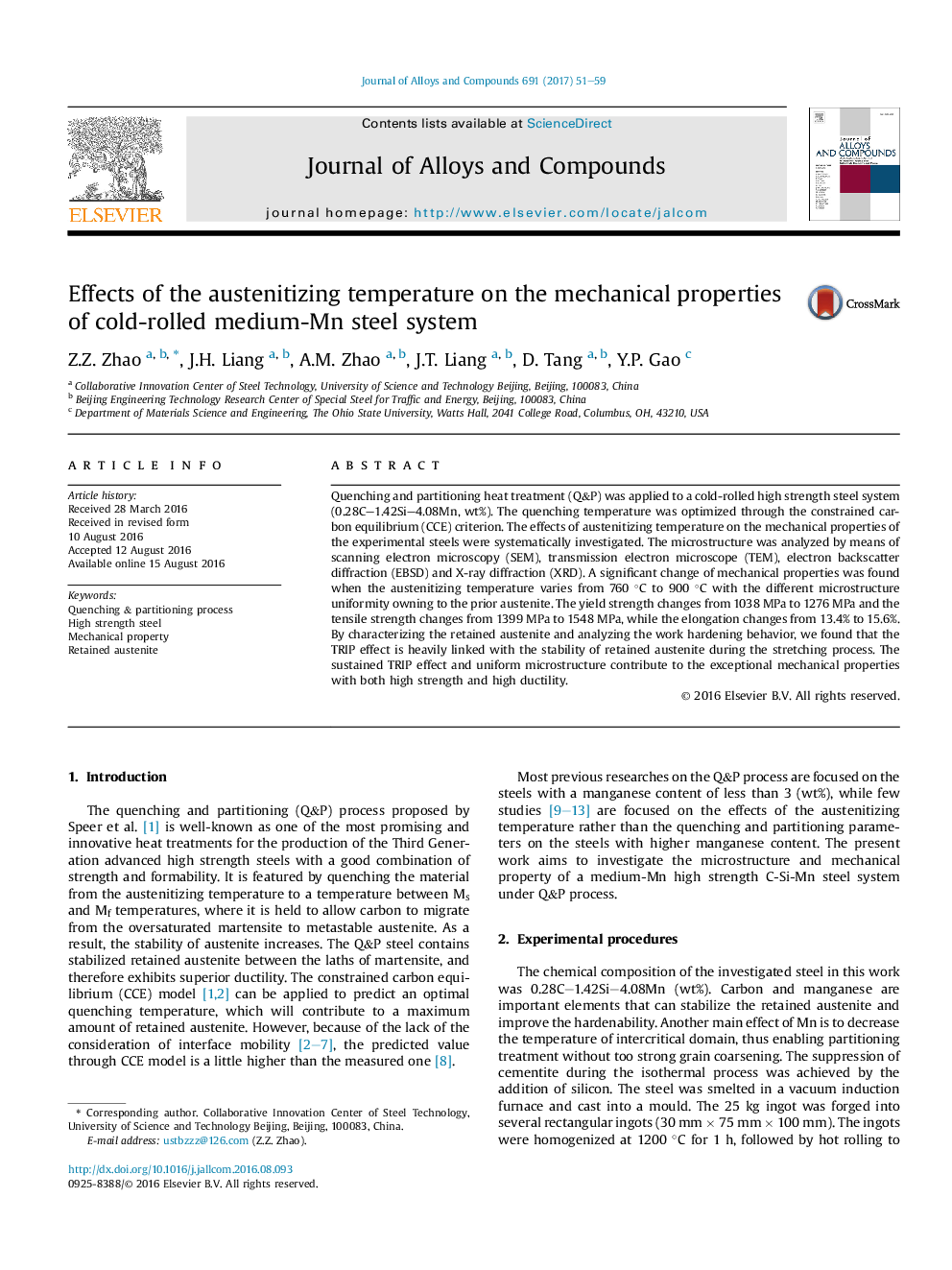| Article ID | Journal | Published Year | Pages | File Type |
|---|---|---|---|---|
| 1604864 | Journal of Alloys and Compounds | 2017 | 9 Pages |
Abstract
Quenching and partitioning heat treatment (Q&P) was applied to a cold-rolled high strength steel system (0.28C-1.42Si-4.08Mn, wt%). The quenching temperature was optimized through the constrained carbon equilibrium (CCE) criterion. The effects of austenitizing temperature on the mechanical properties of the experimental steels were systematically investigated. The microstructure was analyzed by means of scanning electron microscopy (SEM), transmission electron microscope (TEM), electron backscatter diffraction (EBSD) and X-ray diffraction (XRD). A significant change of mechanical properties was found when the austenitizing temperature varies from 760 °C to 900 °C with the different microstructure uniformity owning to the prior austenite. The yield strength changes from 1038 MPa to 1276 MPa and the tensile strength changes from 1399 MPa to 1548 MPa, while the elongation changes from 13.4% to 15.6%. By characterizing the retained austenite and analyzing the work hardening behavior, we found that the TRIP effect is heavily linked with the stability of retained austenite during the stretching process. The sustained TRIP effect and uniform microstructure contribute to the exceptional mechanical properties with both high strength and high ductility.
Related Topics
Physical Sciences and Engineering
Materials Science
Metals and Alloys
Authors
Z.Z. Zhao, J.H. Liang, A.M. Zhao, J.T. Liang, D. Tang, Y.P. Gao,
